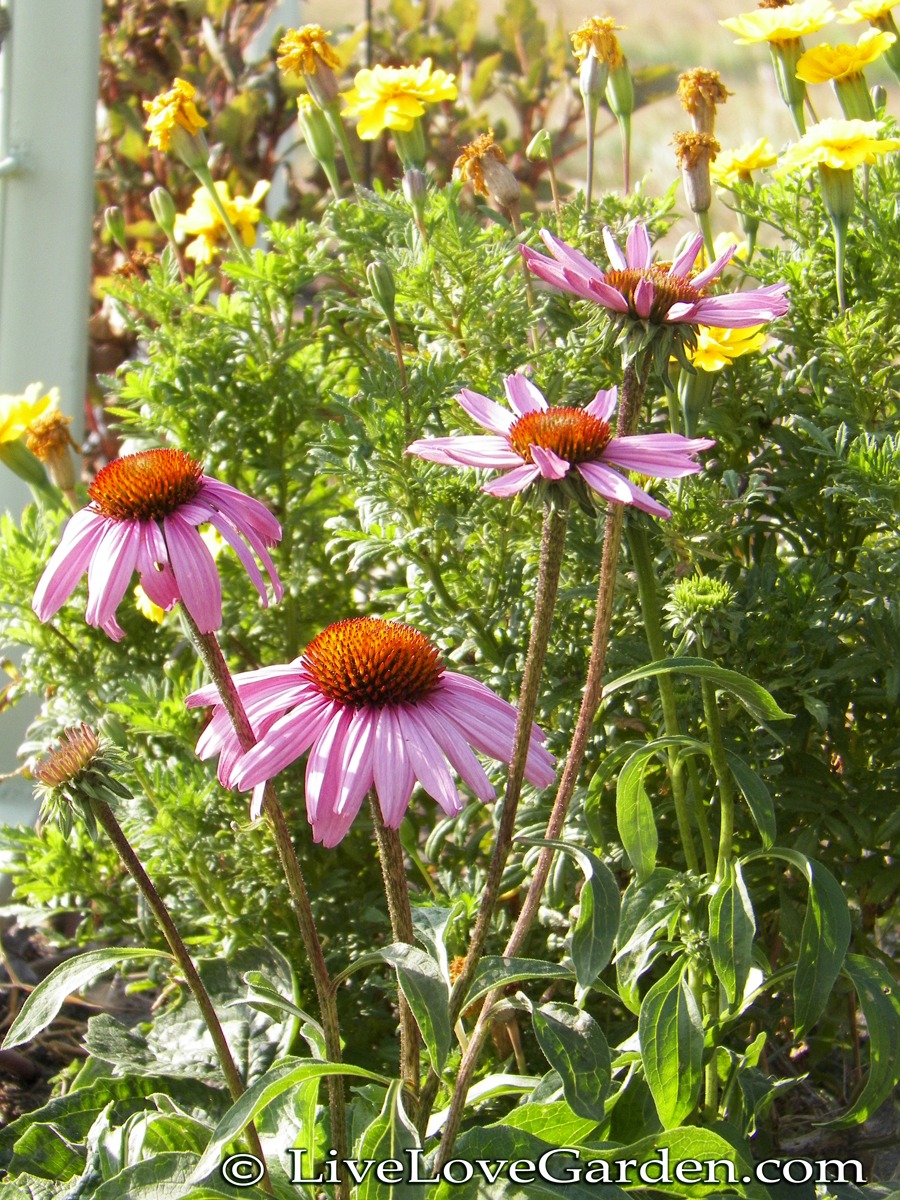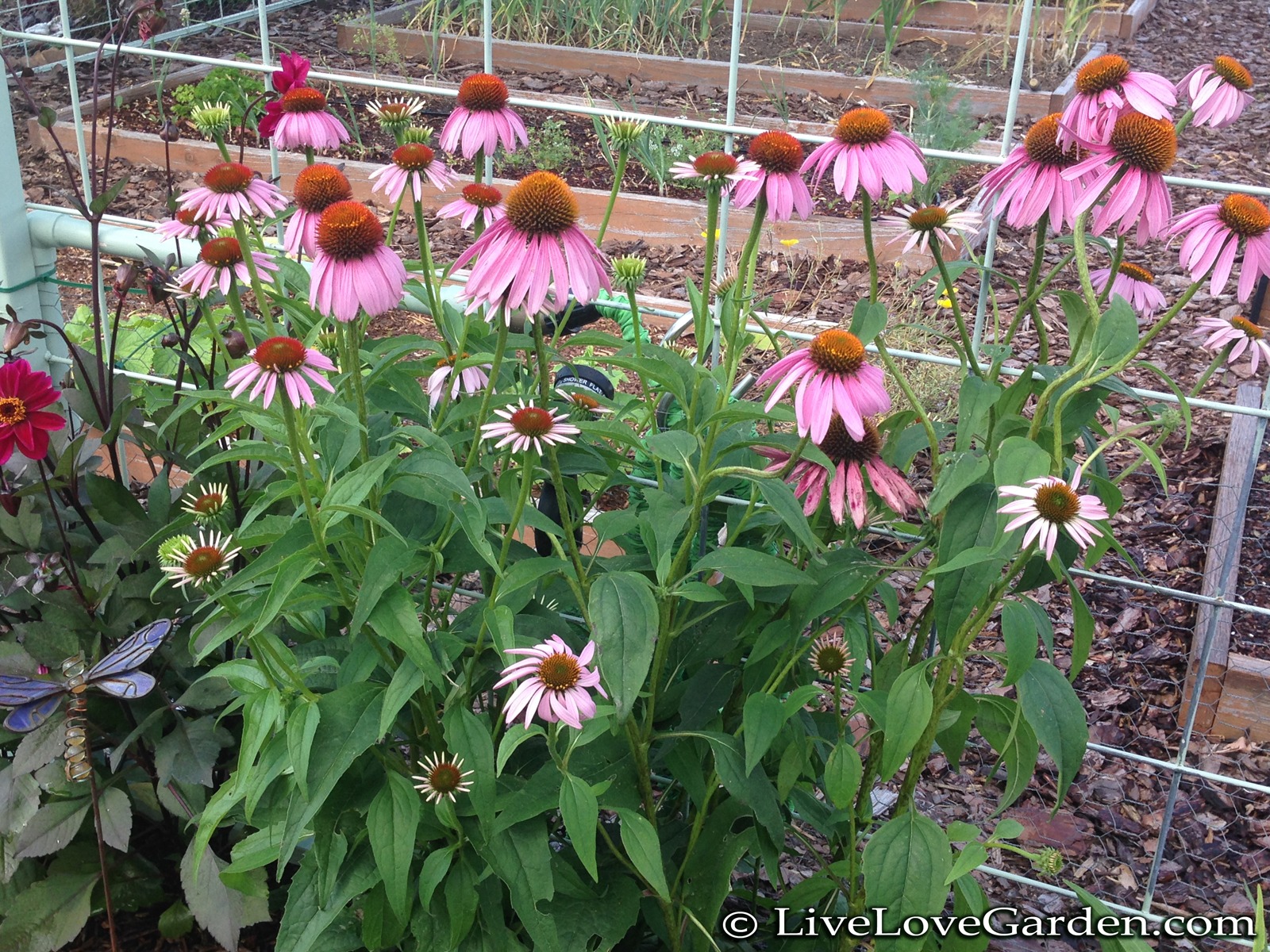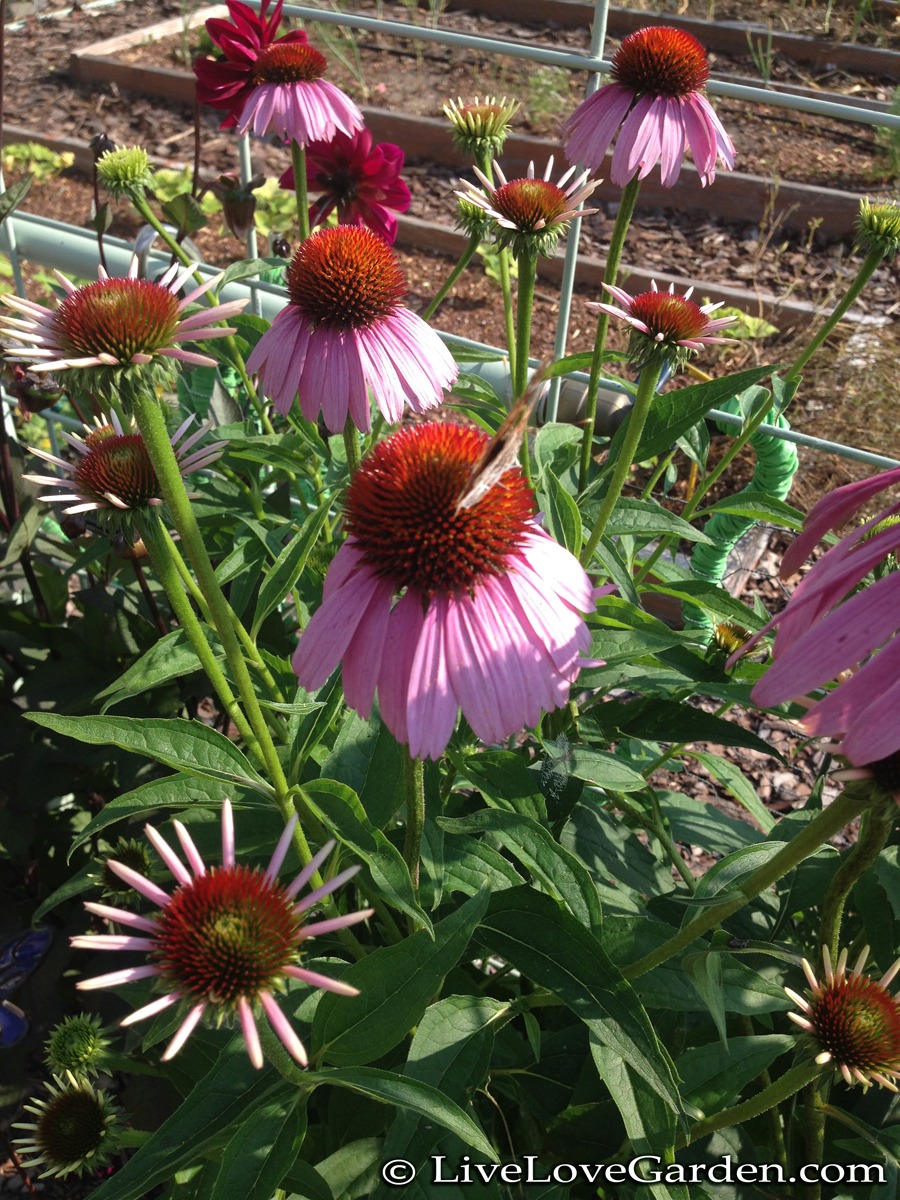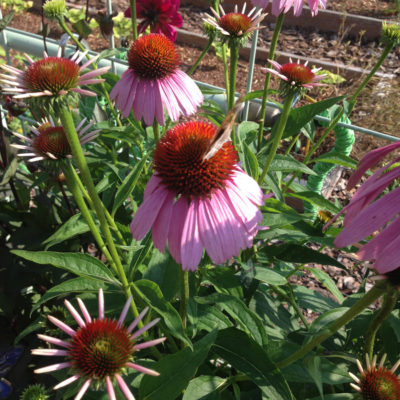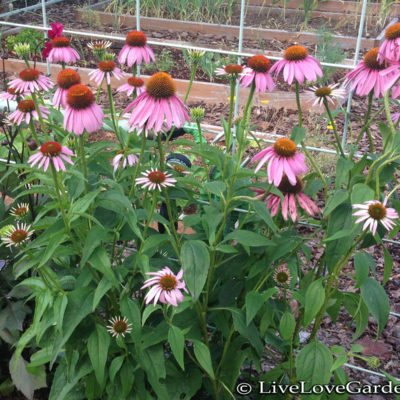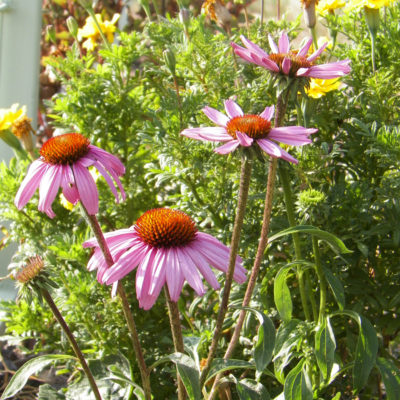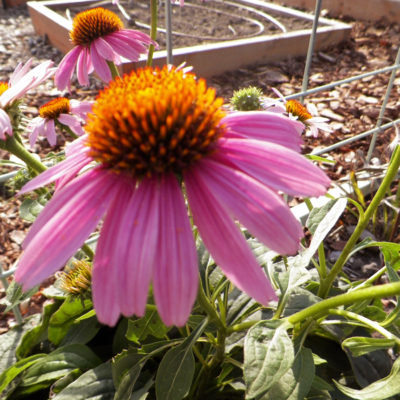Coneflower Echinacea Information:
Botanical Name: Echinacea
Plant Type: Perennial flower
Height: 2-4'
Width: 2-3'
Germination: 90-120 days from seed to flower
Sun Exposure: Full sun to partial shade
Soil Type: Loamy
Hardiness Zones: 3 4 5 6 7 8 9
Flower colors: Pink Purple Red White
Bloom Time: Summer Fall
Special Features: Attracts Butterflies, Bees, Medicinal,
Drought Tolerant, Heat tolerant, Cut Flowers,
Attracts Song Birds, Deer Resistant.
Planting & Care of Echinacea:
Loosen 12-14" of soil and mix in 2" of compost to make the planting area loamy. Echinacea does not like to sit in water so drainage is important. During the summer they should receive 1" of water a week, water as needed to achieve this amount.
Placing 1-2" of mulch around soil surrounding plant will help keep the ground moist in the summer. Although you will find Echinacea can handle neglect.
Plant Echinacea at least 12" apart in all directions from each other. Air circulation is important to prevent diseases.
After they have completed the flowering cycle cut them back, or allow the flower seed heads to remain for songbirds. Echinacea will die back in the winter and return the following spring even bigger.
Propagation:
Seeds can be collected from the Echinacea flowers by cutting the flowers when they are beginning to wither (but before the birds get them) and hanging them upside down or on a screen to dry. Once completely dry you can crush the flower heads and retrieve the seeds. Wear gloves as they are quite prickly.
You can also gently divide the clumps every few years in the Fall or Spring.
Pests & Disease of Echinacea
Anthracnose
Aster Yellows
Leaf miners
Powdery Mildew
Bacterial spots
gray mold
vine weevils
Japanese beetles
leaf hoppers
aphids
Controlling Pest & Disease of Echinacea
Organic fungicides and pesticides can help control infestations. Avoid flower heads as our much needed beneficial bees visit. Water with soaker hoses or drip lines to help keep plants healthy. Space properly for good air circulation.
Medicinal use of Echinacea
Echinacea is considered a medicinal herb and is native east of the Rocky Mountains in the United States. Echinacea was used by the Great Plains Indian tribes to make herbal medicines. All parts of the plant; leaves, flowers, stems, and roots are used to make medicine. There is a certain chemical in Echinacea that attacks yeast and fungi, and Echinacea is thought to activate chemicals in the body to reduce inflammation. Research has suggested it can stimulate the bodys immune system. There is conflicting evidence in the validity of the effectiveness. ²
Medicinally Echinacea is used to treat infections including the common cold, the flu, respiratory infections, urinary tract infections, vaginal yeast infections, HPV, Herpes, HIV/AIDS, tonsillitis, strep, syphilis, typhoid, malaria, ear infections, warts, and nose and throat infections. Echinacea is also used for burns, abscesses, wounds, bee stings and bug bites. ²
You can purchase Echinacea at many stores or online as juice, tea, and tablets but there are concerns of the quality and contaminates they may have encountered.²
Refer to Web Md for in detailed information regarding uses, side effects, interactions, and dosing if you are considering using Echinacea medicinally.
Common Names:
American Cone Flower, Black Sampson, Black Susans, Brauneria Angustifolia, Brauneria Pallida, Brauneria Purpurea, Comb Flower, Coneflower, Echinacea Angustifolia, Echinacea Pallida, Echinacea Purpurea, Echinacea Serotine, Echinacea Speciose, Echinaceawurzel, Échinacée, Échinacée Angustifolia, Échinacée Pallida, Échinacée Pourpre, Échinacée Purpurea, Equinácea, Fleur À Hérisson, Hedgehog, Helichroa Purpurea, Igelkopfwurzel, Indian Head, Kansas Snakeroot, Narrow-Leaved Purple Cone Flower, Pale Coneflower, Purple Cone Flower, Purpursonnenhutkraut, Purpursonnenhutwurzel, Racine D'echininacea, Red Sunflower, Rock-Up-Hat, Roter Sonnenhut, Rudbeckia Purpurea, Rudbeckie Pourpre, Schmallblaettrige Kegelblumenwurzel, Schmallblaettriger Sonnenhut, Scurvy Root, Snakeroot, Sonnenhutwurzel. ²

